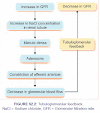Cinchona:
Cinchona is quinoline alkaloids producing plant, which belongs to family Rubiaceae.
Synonym:
Cinchona bark, cinchona.
Botanical names:
Cinchona succiruba(red cinchona).
Cinchona ledgeriana.
Cinchona calisaya (calisa yellow cinchona).
Family:
Rubiaceae.
Part used:
Dried bark.
Plant description:
Cinchona was named in honour of the countess of cinchon, the wife of the viceroy of Peru (South America).
Succiruba is a Latin word means red juice, calisaya is the Spanish and Indian name in Peru for bark of the tree. Ledergiana is named in honour of Charles ledger who introduced cinchona in east indies.
Cinchona plant is an evergreen tree that grows 15-45 feet in height.
The bark is collected from the tree of 6-9 years of age. The tree is uprooted with tractor and the fresh bark from the trunk and roots is then removed with bare hands.
Young bark of 6-9 years old plant contains 3 times more alkaloids than the old tree.
Just before world war 2, java was the supplier of over 90-% of worlds consumptions of this important
drug. When the Japanese cut of this supply from the world, several synthetic anti-malarial like
chloroquine, ruinacrine and primacrine were developed to replace cinchona.
Cultivation of cinchona tree was also undertaken in several countries.
Active constituents:
- Quinine
- Quinidine
- Cinchonine
- Cinchonidine
Uses:
- Cinchona is used as antimalarial drug.
- Quinidine also has antimalarial use.
- Quinidine is used in cardiac arrhythmias.
- Cinchona has many other uses, for the majority of which the effectiveness is unconfirmed.
- In Asia, it is taken for bacterial infections. Chronic dysentery and fevers.
- Homeopathic uses include as antigout medication and in kidney inflammation.
Special caution:
If any one has bleeding problems he should be aware that cinchona can delay bleeding. Quinine and quinidine based drugs are also known to cause allergic skin reactions.
Remember that when taken in excess or habitually or used in excessive doses, cinchona is quite toxic.



